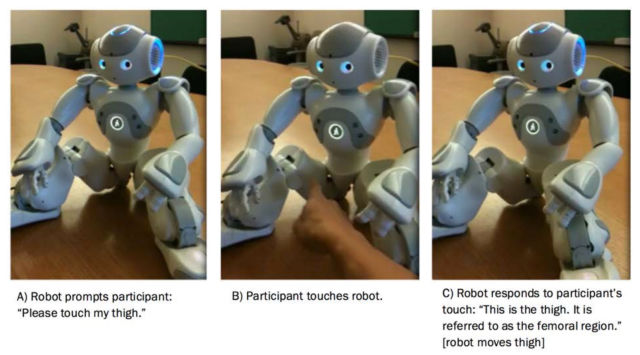While AIs and robots, like SoftBank’s Pepper and Microsoft’s Tay, are trying to connect with humans emotionally, a team of researchers at Stanford are focusing on how to build robots that respond to something more physical: touch.
Technically speaking, touch is also a part of what it means to be emotionally connected – think of getting a hug when you’re sad, or gently touching someone’s hand when they’re telling a difficult story.
To learn more about how humans and robots respond to each other’s touch, the team programmed a robot to ask humans to touch 12 different parts of its body, which is wired to detect skin conductivity. Depending on where a human is touched, skin conductivity levels are higher when they’re “emotionally aroused” – that is to say, they feel a strong sentiment, not a sexual arousal.

The research found that humans often hesitated to touch the robot when it asked them to touch its “inaccessible” regions, such as the genital areas. It’s nice to see that humans react to the robot as if it was another human being.
“Our work shows that … people respond to robots in a primitive, social way. Social conventions regarding touching someone else’s private parts apply to a robot’s body parts as well,” said Jamy Li, one of the team’s researchers.
Let’s just hope this sort of technology is used to build emotional and physical empathy in the next generation of robots, and not to be incorporated in a Scarlett Johansson robo-clone.
You can watch an extended video of the experiment below.
Get the TNW newsletter
Get the most important tech news in your inbox each week.





